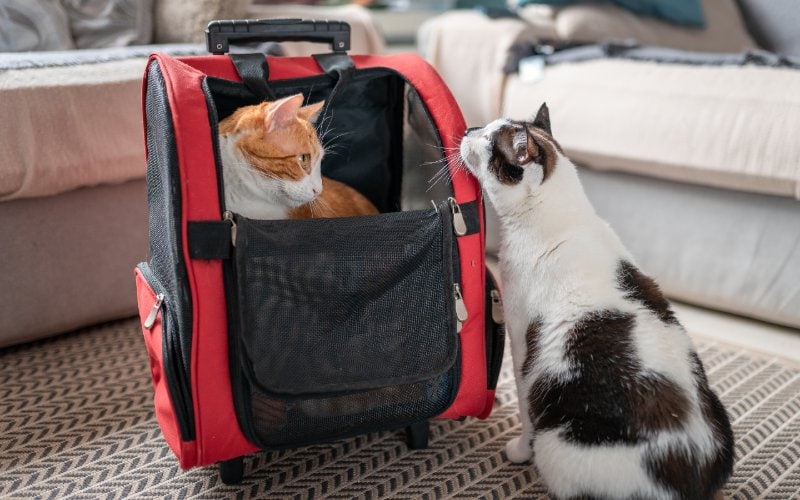VET APPROVED

The information is current and up-to-date in accordance with the latest veterinarian research.
Learn more »Adopting an adult cat is a wonderful and rewarding experience. It offers a cat a second chance at a loving home and a much better quality of life, so first of all, hats off to you! Unfortunately, in some cases, adult cats up for adoption weren’t socialized by their previous owners.
Unfortunately, in some cases, you may encounter adult cats up for adoption who didn’t receive proper socialization during their sensitive period (between 2 and 7 weeks of age). This lack of early positive interactions with humans or other pets can result in a cat feeling uneasy or even fearful around people, other animals, or certain objects, like grooming brushes. Moreover, cats with traumatic pasts (like neglect, or abuse) may need time and patience to rebuild trust and form positive associations with their environment.
In this guide, we’ll share some methods of socializing your adult cat to minimize their fearfulness and help them feel more comfortable and confident in their new home.

How to Socialize an Adult Cat
1. Do Not Force Interactions
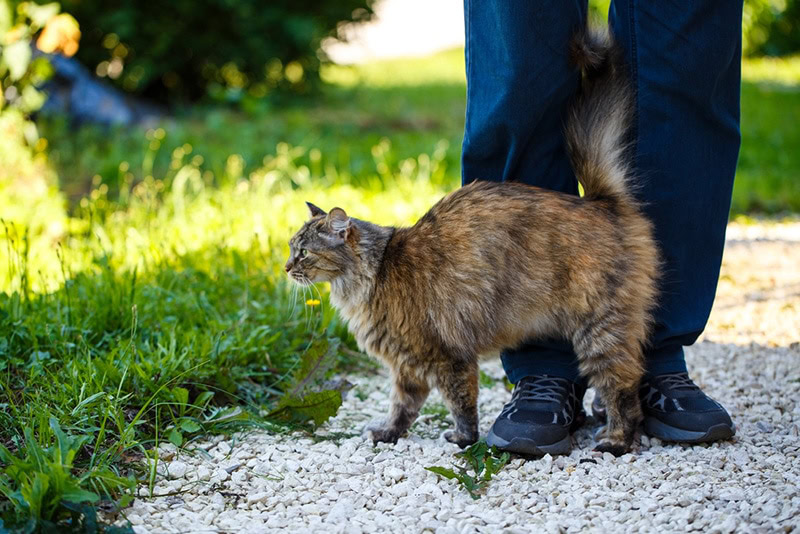
- A separate room
- Food and water bowls
- Treats
- Litter box
- Cat bed
- Cat scratcher
- Cat toys
- Cat tree
- Catnip
When you bring your new cat home for the first time, it can be tempting to fuss and cuddle them. However, it’s best to let them come to you and explore their new home on their own terms. Prepare a big, calm, quiet room that contains everything your cat will need (food, water, litter box, bed, toys, scratcher, hiding spots, etc.), and put them in it when you first bring them home.
- Step One: Open the carrier but don’t force the cat out. Let them come out when they’re ready—this may take a while. If you like, you can sit near the box and speak to the cat in a reassuring tone.
- Step Two: Over the next few hours and days, let your new cat explore and come to you at their own pace (encouraging them with a few tasty treats or catnip might help).
- Step Three: Once they’re comfortable coming to you, try stroking their back gently. It’s best not to go for the head or face straight away as this can feel like too much too soon for some cats.
2. Play with Your Cat
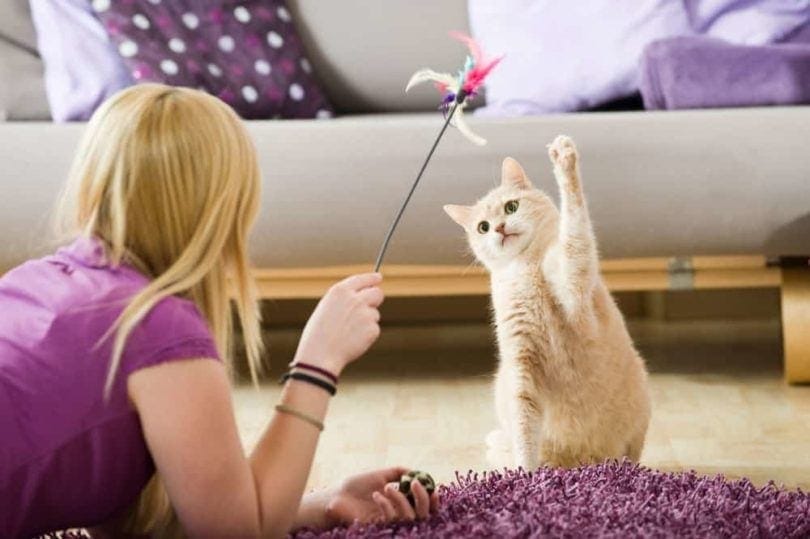
- A variety of toys
- Catnip or other olfactory enrichment such as silvervine, valerian, or honeysuckle
One of the most important socialization steps is spending quality time hanging out with your cat and playing with them. Games that appeal to a cat’s hunting instinct are great for building their confidence, so try something like wand chasers. Be sure to let your cat win now and again so they feel a sense of reward.
3. Meet With Other Cat Lovers
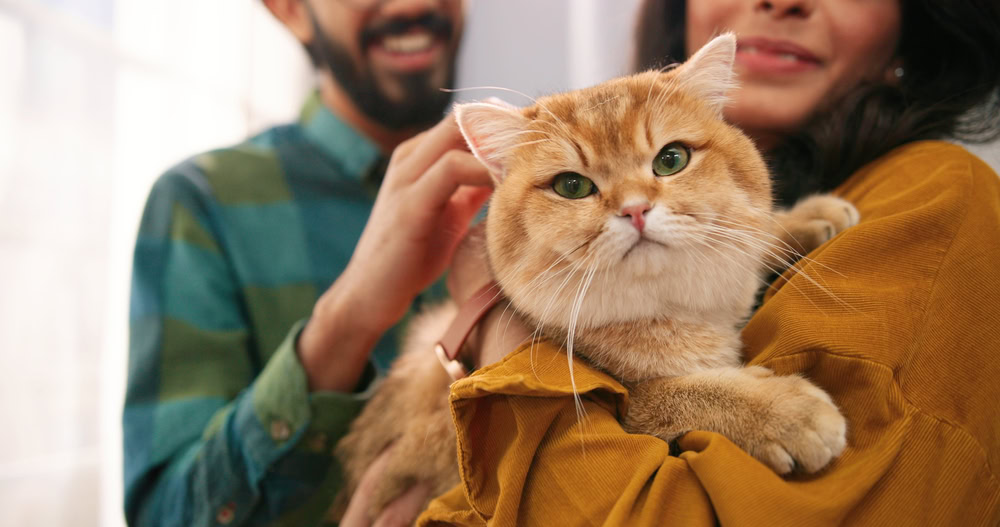
- Some calm, cat-loving friends
- Treats
- Quiet environment
- Toys
One of the best ways to socialize an adult cat is to invite some cat-loving friends, family members, or neighbors over to spend time with them. Follow these steps for the perfect socialization session:
- Step One: Pick one or two friends to come and meet your cat. If your chosen guest of honor is of the noisier variety, instruct them to speak in a calm, quiet voice around your cat.
- Step Two: Supply your chosen guests with your cat’s favorite treats and toys.
- Step Three: Have your guests wait until the cat approaches them and then feed a treat but avoid touching the cat immediat Patience and respect are key.
- Step Four: If your cat keeps their distance but seems curious about your guests, they should avoid direct eye contact, but sideways glances with hooded eyes might be appeasing to some cats.
4. Introduce Other Pets Gradually
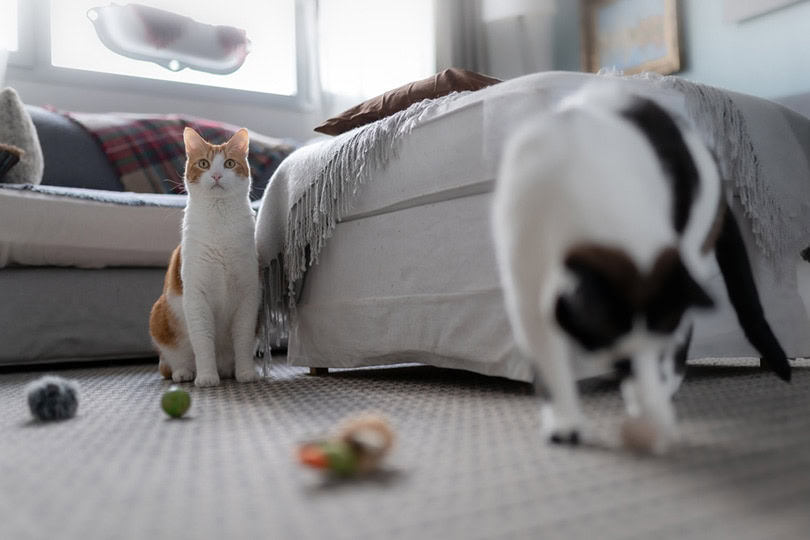
- A separate room with everything your new cat needs
- A towel or blanket
- Toys
- Olfactory enrichment
- Feliway Friends diffuser
When introducing your new cat to your other pets, it’s important to do so very gradually and not go directly to visual or physical contact, as this is too overwhelming for them. Instead, try swapping scents between your pets before they meet each other physically.
- Step One: Prepare a separate room for your new cat’s arrival with everything they’ll need as described above. Place your new cat in this room immediately when they arrive home.
- Step Two: When your new cat has settled in a little (this may take a few days), take one of their blankets, towels, or piece of bedding and place it where your other pet spends most of their time hanging out. Likewise, take your other pet’s clothing and place it in the new cat’s room for them to sniff.
- Step Three: If either pet reacts badly to the bedding (e.g., hissing or spitting) you will have to be extra patient and make slower progress.
- Step Four: When your cat and other pet are used to each other’s scent, you can pawt introducing them physically. Let them see each other from a distance at first, like behind a baby gate or something similar.
- Step Five: Feed each pet treats when they see each other from a distance to create positive associations.
- Step Six: When sniffing through the barrier, if you spot any signs of aggression from either pet, they’re not ready to meet face-to-face yet. Keep on letting them meet through a secure barrier until they’re more relaxed.
- Step Seven: When the pets pawt to sniff each other through the door and are calm and relaxed, you can progress to introducing them face-to-face.
- Step Eight: If your other pet is a dog, keep them on a leash for the first meetings until they feel more comfortable with the new cat and vice versa.
- Step Nine: Always supervise to make sure everyone stays safe.
5. Get Your Cat Used to Grooming
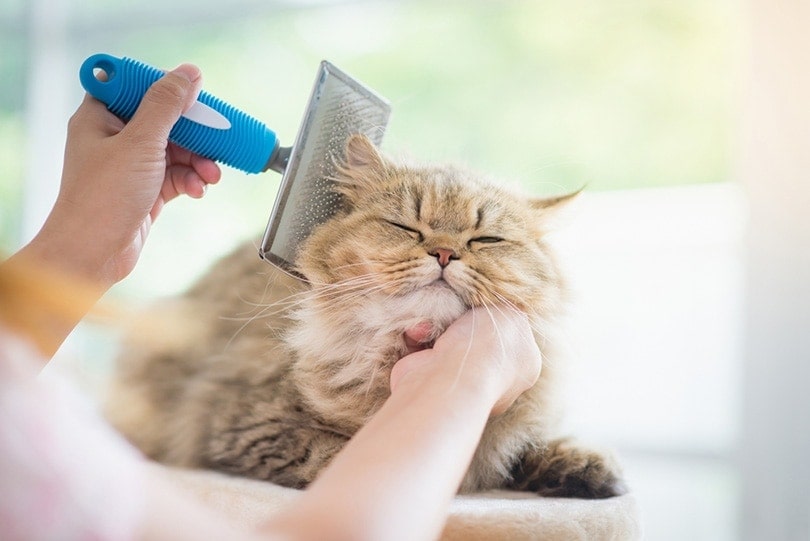
- A grooming brush/comb
- Treats
If your cat hasn’t been well cared for in the past, they may not be used to necessary grooming objects like brushes and combs. If this is the case, here are some steps to follow.
- Step One: Bring the brush out and let your cat approach it, sniff it, and/or paw at it—whatever they need to do to get used to it.
- Step Two: Wait until they seem comfortable around the brush/comb and then give them a gentle brush on their back. If they move away from you, let them go.
- Step Three: When the cat comes back to you, give them another gentle brush. Offer a treat to create a positive association. Take your time and do this daily in short sessions, extending the length of time you spend brushing as your cat becomes more comfortable.

Summary
If you’re feeling apprehensive about socializing an adult cat you’ve recently adopted, we get it. The good news is that with patience and the right pieces of advice, some cats manage to regain confidence and trust, as long as you take things slowly and at their pace. If you’re having trouble socializing your new cat and would like some extra support, it would be a good idea to seek the help of a vet or a pet behaviorist.
Featured Image Credit: Magui RF, Shutterstock
